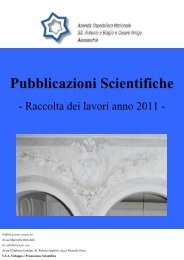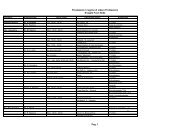Working Paper of Public Health Volume 2012 - Azienda Ospedaliera ...
Working Paper of Public Health Volume 2012 - Azienda Ospedaliera ...
Working Paper of Public Health Volume 2012 - Azienda Ospedaliera ...
Create successful ePaper yourself
Turn your PDF publications into a flip-book with our unique Google optimized e-Paper software.
<strong>Azienda</strong> <strong>Ospedaliera</strong> Nazionale“SS. Antonio e Biagio e Cesare Arrigo”<strong>Working</strong> <strong>Paper</strong> <strong>of</strong> <strong>Public</strong> <strong>Health</strong>nr. 16/<strong>2012</strong>solved through the envelopment map (Cooper et al., 2002), the boostrap methodology (Simarand Wilson, 2004), and the sensitivity analysis (Cooper et al., 2004).In the literature, the most popular technique used to compute technical efficiency scores is theDEA methodology, which is a deterministic and non-parametric approach. This model doesnot require information on relative prices – differently from cost function models – and it isflexible and versatile. In addition, the DEA methodology can easily consider multiple inputsand outputs; whereas the SFA approach typically uses only one input (total cost) or output(total revenue). When the multivariate SFA is used, another problem occurs: how to combineresiduals from different models (O’Neill et al., 2008). Based on these considerations, manyauthors have applied the DEA approach to the healthcare field.Sherman (1984) was the first to apply the DEA methodology in order to measure theefficiency <strong>of</strong> seven US hospitals and his research has been followed by many applicationsconsidering other healthcare providers, i.e., physicians (Chilingerian and Sherman, 1990;Chilingerian, 1994), nursing homes (Chattopadhyah and Ray, 1996) and health maintenanceorganizations (Siddharthan et al., 2000).As for Europe, the first analysis on efficiency was carried out by Färe et al. (1994) onSwedish hospitals and, in few years, researches on this topic have increased.Obviously, from then on, applications have been addressed to study adaptations and/ormodifications <strong>of</strong> classical models in order to define the most representative framework to beapplied. Referring to the survey by O’Neill et al. (2008), the standard DEA model (Ozcanand McCue, 1996; O’Neill and Dexter, 2005; Charnes et al., 1989; Thompson et al., 1986;Färe et al., 1985) and its extensions are the most commonly applied in the literature (i.e.,DEA with congestion: Grosskopf et al., 2001; multifactor efficiency: O’Neill, 1998; scaleefficiency: Maindiratta, 1990; DEA in combination with SFA: Chirikos and Sear, 2000;Giokas, 2001; Jacobs, 2001; Retzlaff-Roberts and Morey,1993; DEA in conjunction with theSingle Price Model: Ballestero and Maldonado, 2004).These researches have <strong>of</strong>ten been linked to the measure <strong>of</strong> technical efficiency over timethrough Malmquist indexes (Caves et al., 1982; Burgess and Wilson, 1995; Färe et al., 1994;Maniadakis et al., 1999; McCallion et al., 2000; Quellette and Vierstraete, 2004; Solá andPrior, 2001; Sommersguter-Reichmann, 2000).As mentioned above, the DEA models have been used extensively in order to obtain a simpleefficiency score representing the ability <strong>of</strong> firms (or units) to maximize outputs, keeping the3



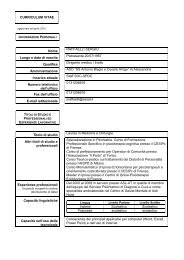
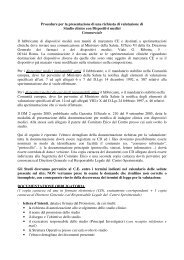

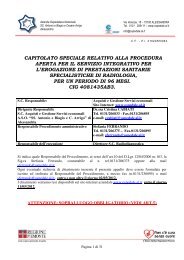
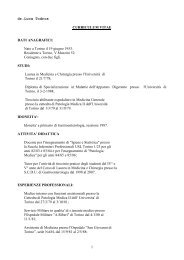
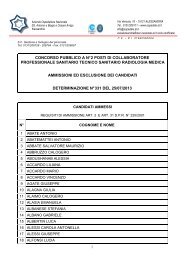

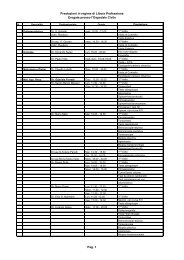


![[torino - 1] lastampa/urc/01 ... 26/10/09 - Azienda ...](https://img.yumpu.com/44058002/1/190x32/torino-1-lastampa-urc-01-26-10-09-azienda-.jpg?quality=85)

